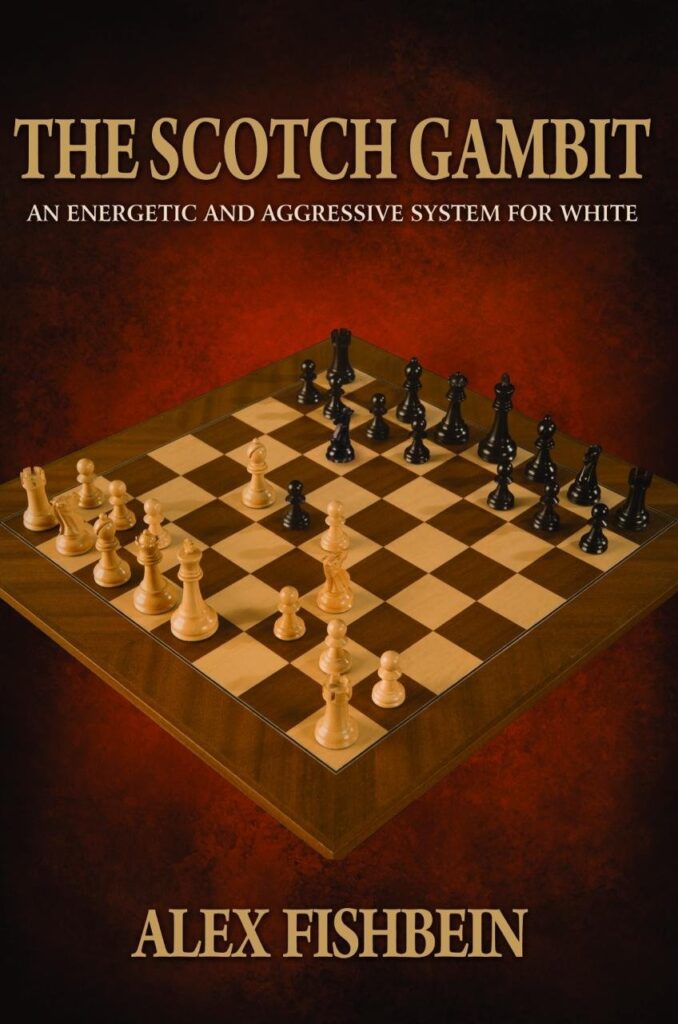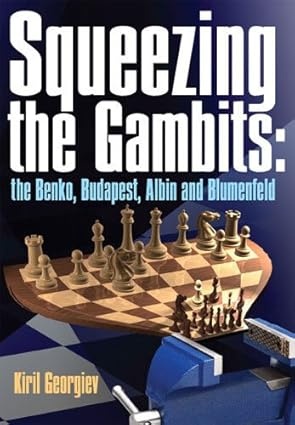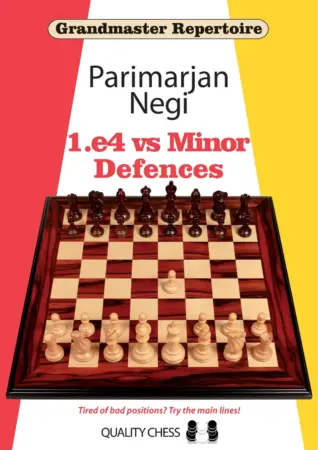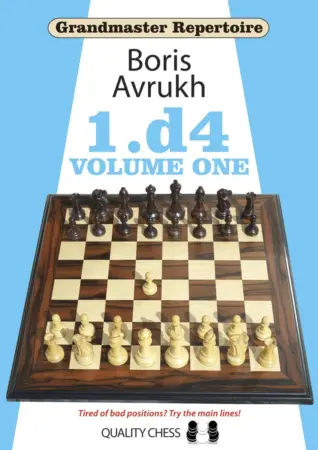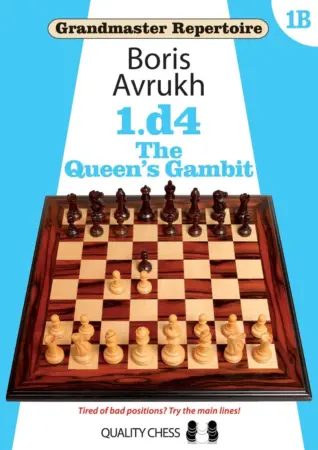A book that perfectly covers “An energetic and aggressive system for White”. The Scotch Gambit, an opening most 1…e5 players fear, is a great alternative to the Spanish and Italian theoretical battles, it deviates from the main line structures and theory of double king’s pawn openings, and puts immediate pressure on Black.
Alex Fishbein, an American Grandmaster whose peak ranking was #150 in the world, wrote a succinct, short manual which is more than enough to play the Scotch Gambit on any level. He says in the introduction that the book is meant for anyone from intermediate to professional level, which, I must say, seems to be the case.
The book isn’t filled with endless theoretical lines, and Fishbein instead focuses on explaining the ideas behind the opening moves, which is what I consider to be the most important part of a chess book devoted to an opening system.
The chapters are divided logically. Fishbein covers the main line, and 9 important branches the position could deviate into, covering every important variation.
Learn openings and build a repertoire the easy way. Chessbook is like having access to a hundred opening books combined. It helps you focus on moves you will encounter in real play, it helps you understand the ideas behind them, and it highlights what you’re doing wrong.
Fishbein writes: “To improve your chess, it is important to play openings that develop a sense of initiative, an ability to calculate variations, and a good feeling for king safety.” He goes on to say: “I know many players who did not reach their full potential because they did not play attacking systems.” I must say this sentence rings very true for me personally. I’ve been playing the Caro-Kann, the Semi-Slav, and I’ve mostly been seeking safety of known and closed structures in my repertoire. I’ve decided to change that, start playing sharp openings in which Fishbein’s advice is obeyed. That is why I picked up the Scotch Gambit in the first place. Instead of my usual Italian, I will play sharp, tactical variations!
Fishbein is of the opinion that openings like the Ruy Lopez are more suited to Grandmasters, and that developing players should build a repertoire around lines that neither avoid nor delay a confrontation.
Every chapter of the book is accompanied with illustrative games. The games are wonderfully annotated and offer great insight into players’ thoughts and reasoning. Going through all of them will arm you with a dangerous opening system for white and transfer the theoretical ideas into applicable knowledge.
With only 128 pages, the Scotch Gambit is a relatively easy read. I’ve gone through it in a week, while covering every game in detail and while going through Silman’s Endgame Course simultaneously.
If you want to add the Scotch Gambit to your opening repertoire, I believe that Fishbein’s book is by far the best learning resource out there.

